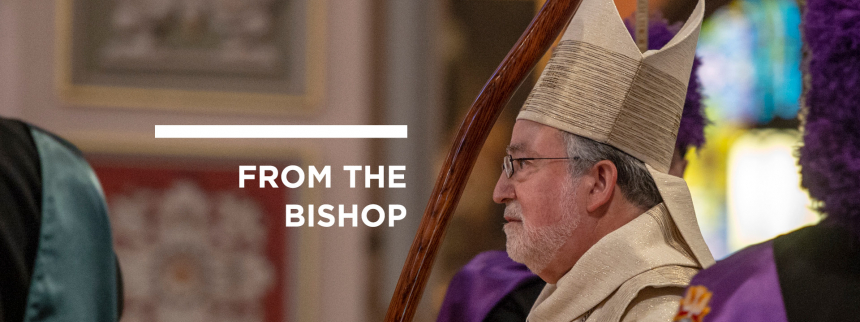
While visiting with friends in New York City recently, I was treated to an evening at one of the prominent jazz clubs in the Big Apple. We listened to a wonderful quartet of musicians led by the talented pianist, Cyrus Chestnut.
Pausing after a few dazzling displays of melodic virtuosity, Mr. Chestnut turned from the keyboard and grinned broadly toward the audience crowded into the intimate confines of the club. He declared that he and his fellow musicians were committed to improvisation. He paused, then instructed us.
Improvisation was not just playing whatever you want. It is not a jumble of random notes. Like playing any sport, it requires discipline and practice. One needs to know the rules. To write a poem one must know the language, both its meaning and structure. The renowned pianist had a point. While abiding by these structures, the ability of an artist to innovate new perspectives, meanings and emotions still spark moments of wonder, amazement and delight in sports, literature and music.
In this regard, due recognition should be given to those parents and teachers who patiently coach and mentor children through the early developmental stages of mastering a sport, playing an instrument, and learning to read, long before one attains the level of artistry heard on the stage that night or any other worthwhile creative ambition.
Chasing a stray throw, explaining the broken window to a neighbor, and soothing a bruised elbow or ego, are all necessary parts of the training that leads to the perfect pitch, the confident free throw, and the on-the-mark pass completion.
Having good ear plugs and a repertoire of encouraging words are prerequisites after acquiring the trumpet, piano, guitar or flute for a young child. The parent must also be the manager, recruiting unwilling audiences and shy performers for spontaneous recitals after Thanksgiving dinner. With patience and persistence, a home accustomed to “Twinkle, twinkle little star” and “Blowing in the Wind” will, in time, have the notes of Chopin’s “Moonlight Sonata” wafting through the air.
Holding the young child’s attention in one hand with a book in the other, restraining the infant’s impulse to chew the pages, rounds of reading and repeating, then slowly drawing out from tender lips the right phonetic sound for each letter, are all milestones on the path to the moment when reading books becomes the excuse for undone chores.
There was no doubt the Cyrus Chestnut quartet was practiced, disciplined and well-schooled as they delighted the audience with their lyrical landscape of sounds. Their own personal delight in one another was also apparent. For sure, they had sheet music in front of them. Mr. Chestnut used an iPad. Part of the thrill from watching a jazz set is seeing how the artists keep an eye on one another, trading the lead role from the piano, to the bass, to the drums, then the clarinet. With a nod, a glance or a smile they move aside then come together. A raised hand signals the finale. One musician would invariably surprise another with a curious twist, a sudden pause, a momentary detour. In one light moment, Mr. Chestnut slipped in the birthday tune winking at a young couple seated on the side of the stage.
Musical improvisation provides a valuable lesson on the nature of human freedom. As Mr. Chestnut insisted, it is not a reckless rendition of someone’s ego. As seen in the interpersonal signals throughout the evening’s performance, musical improvisation is a conversation using the time-tested language and grammar of American Jazz.
The artists not only spoke to one another. Their melodies and style were learned from listening to the past while trying to give voice to their own response. So a musical number would begin as tribute to Ron Carter or John Coltrane or Thelonious Monk. These musical conversations become a lively tradition. As I listened to the talented quartet, enjoying how the old and the new are weaved into a sweet harmony, my friends and I all became part of that tradition.
Catholic education draws its inspiration from the rich religious, intellectual and artistic tradition that began with the disciples seated around the feet of Jesus. The Catholic tradition offers its own habitual language and customs, so that while separated by time and space the voice of the Good Shepherd still echoes in the hearts and minds of children and young people today. The development of faith that bears fruit in charity has a structure and an asceticism that does not constrain us; it breeds the improvisational nature of Catholic life.
The kaleidoscope of saints, holy men and women, learned the Gospel traditions of Jesus and ignited a stunning array of Christ-like examples across the unending song of salvation. These stories continue to amaze young souls with the countless possibilities for holiness and virtue. Like musical tradition, the Catholic tradition is a long, interesting conversation echoing through the centuries.
In the prologue to the Gospel according to John, the evangelist declared: “The Word became flesh.” (Jn 1:14) This was a divine moment that became a human movement through the centuries. Through wars and peacetime, famine and prosperity, development and destruction, scandals and virtue, Jesus speaks to men and women. They, in turn, have amazed the Church and the world with ever new ways that the “Word became flesh.” We have been blessed by this awesome cloud of witnesses to the ever-innovative mystery of the Incarnation. While the Holy Spirit chooses an assortment of human instruments with which to sing salvation’s song, Jesus is the same, yesterday, today and forever. (Heb 13:8)
This beautiful tradition begins to find its melody in those humble, simple moments as parents and teachers lean close to their children to help them learn their lessons. In such ordinary, tender encounters, Jesus, the good shepherd, puts a new song on the lips of his little ones (cf. Ps 40:4) and it is wonderful in our eyes. (cf. Ps 118:23)

